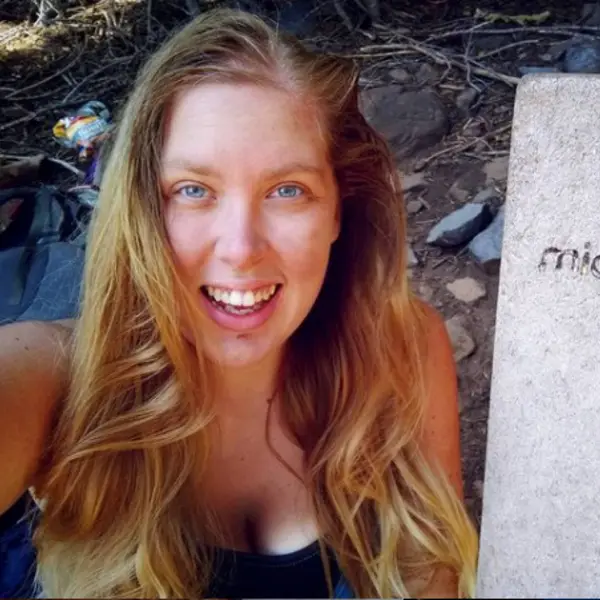If you’re given counterfeit money, you could have it confiscated — or even end up in trouble yourself if you spend it. Learn how to make sure your money is genuine.
8 ways to tell if the bill is fake
US money has a number of identifying characteristics you can use to check if a bill is genuine.
- Texture. Genuine money has a distinctive texture. If you touch a bill and it doesn’t feel right or familiar, it might be a counterfeit. Examine it more closely for further signs of counterfeiting.
- Colored fibers. Genuine bills will have red and blue threads woven into them. Counterfeiters will sometimes try to replicate these by printing red and blue lines onto the bills, so compare the texture against another bill — preferably from a bank.
- Color-shifting ink. For bills that are $10 and higher, the number in the bottom right corner will appear to change colors if you look at it from a different angle. Depending on what the denomination is and when it was printed, it may shift from copper to green or green to black. Color shifting ink was first added in 1996, so some older bills may not have this feature.
- The watermark. If you hold the bill up to the light, you should see a watermark on the right side. Depending on how old the bill is, it may be an oval or a replica of the face on the bill. If the watermark is a face that doesn’t match the one in the middle of the bill, it’s a counterfeit.
- Serial number. Each bill has a unique serial number. If you receive multiple suspicious bills and the serial numbers match, they’re counterfeits.The serial number should also correspond to the series number on the bill. The US Department of the Treasury has a table that shows what the first letter of the serial number should be based on the series.
- Printing. US bills have raised printing, and all lines should be sharp. Look for irregularities in definition between bills as well as lines wavering in thickness, color or clarity.
- Security thread. Each denomination has a unique security thread placement and color. Place the bill under a blue light to see what color it glows, and check that it matches the official guidelines for currency denominations.
- Security ribbon. New $100 bills will also have a blue 3D security ribbon with the several of the number 100 and bells printed on it.
Altered bills vs. counterfeit bills
Not all fake bills are printed from scratch. An increasingly common method of counterfeiting is taking smaller bills, like $5 or $10 bills, and altering them to look like $50 or $100 bills. These will feel real, but mismatched security strips and watermarks will give them away.
Looking for a great checking account?
Compare checking accounts with low fees, rewards, mobile deposit and more.
What to do with a counterfeit banknote
According to the Federal Reserve, you should immediately contact local police if you get a counterfeit bill while in the US. If you’re outside the US., contact the Secret Service, which may have a field office in your region. Check the Law Enforcement section of the uscurrency.gov website for details. In either case, try to remember any characteristics of the person who gave you the bill, and write down their license plate number and/or vehicle description if they get in a car.
How to avoid counterfeit currency ending up in your wallet
With digital security increasing, bank transfers or money transfer apps may be the easiest escapes from counterfeit currency. Apps like Cash App, PayPal and Zelle let you send or receive money from friends and family. Then, you can transfer from the app to your bank account, keeping your money fully online.
But it’s not always possible to go completely cashless. If you need to get cash, get it from a bank or ATM rather than getting cash back at a store.
Where does counterfeit money come from?
Counterfeit money comes from various sources both inside and outside of the US. Within the US, it’s typically small groups of individuals that design and print fake money. While outside of the country, larger operations have dedicated themselves to counterfeiting US dollars. Notably, Peru and Colombia are among the countries where millions of dollars in imitation American money has been printed in the past.
Do ATMs detect fake money?
Yes. ATMs can detect fake money by using electronic “eyes” that analyze deposited cash and scan it to ensure it’s printed with magnetic ink and matches the specifications of authentic bills. That said, counterfeit cash that’s deposited at an ATM in an envelope may not be detected until it’s processed at a bank.
Payment apps most popular with younger generations
Over half (52%) of boomers say that they don’t use money transfer services, compared to only 1 in 10 of both gen Y and gen Z.
Bottom line
Learning how to identify counterfeit bills can help prevent you from accidentally accepting them. But the safest way to make sure your money is legitimate is to get it from a bank you trust.
Frequently asked questions
Are debit cards safer than cash?
Not necessarily. Debit cards take the risk of counterfeit money out of the equation, but they come with their own set of risks. To keep your debit card safe, use a chip-and-PIN system, choose a PIN number that’s difficult to guess and opt to insert your card and enter your security pin rather than using contactless technology.
If I have a counterfeit bill, can I trade it in for a real one?
No, in most cases the bill will be confiscated and you won’t be reimbursed.
Do counterfeit pens work?
No. According to the Federal Reserve, counterfeit pens can be faulty and may misidentify a bill as genuine.
Ask a question
More guides on Finder
-
Are Online Banks Safe: Deposit Insurance and Financial Security
Online banks can be just as safe as a brick-and-mortar bank, but make sure they have industry-standard protections and deposit insurance.
-
Can You Open a Joint Bank Account Online?
Most banks now let you open a joint account online, and the process is pretty straightforward.
-
7 of the Coolest Bank Accounts: Unique Features and Sweet Tech
Most bank accounts have the same features, but there are a few that stand out.
-
5 Best Savings and Checking Hybrid Accounts
SoFi, OnePay, Current, GreenFi and Axos have some of the best savings and checking combo accounts out there. Take a look why.
-
SoFi Plus Benefits and How It Works
SoFi Plus is a membership option for SoFi customers that comes with no monthly fees, offering higher APYs and more perks.
-
Does Chime® Have Zelle?
Chime is a fintech company and not a true bank, so it can’t integrate with Zelle. But you can use Chime’s Pay Anyone for P2P payments.
-
5 Best Student Bank Accounts
SoFi, Capital One, Chase, Discover and Revolut have some of the best student bank accounts for savings, checking and building credit.
-
What’s the Best Bank for Seniors?
Charlie, Chase and SoFi are some of the best free bank accounts for seniors and retirees, with competitive APYs and low deposit requirements.
-
Chime Account Bonuses
Chime offers a competitive $100 referral bonus and a $100 direct deposit bonus when you meet certain requirements. See details here.
-
SoFi® vs. Chime: Which Is Better?
SoFi®is better for earning stronger savings rewards, while Chime is better for credit-building. Compared head-to-head, SoFi® wins.

